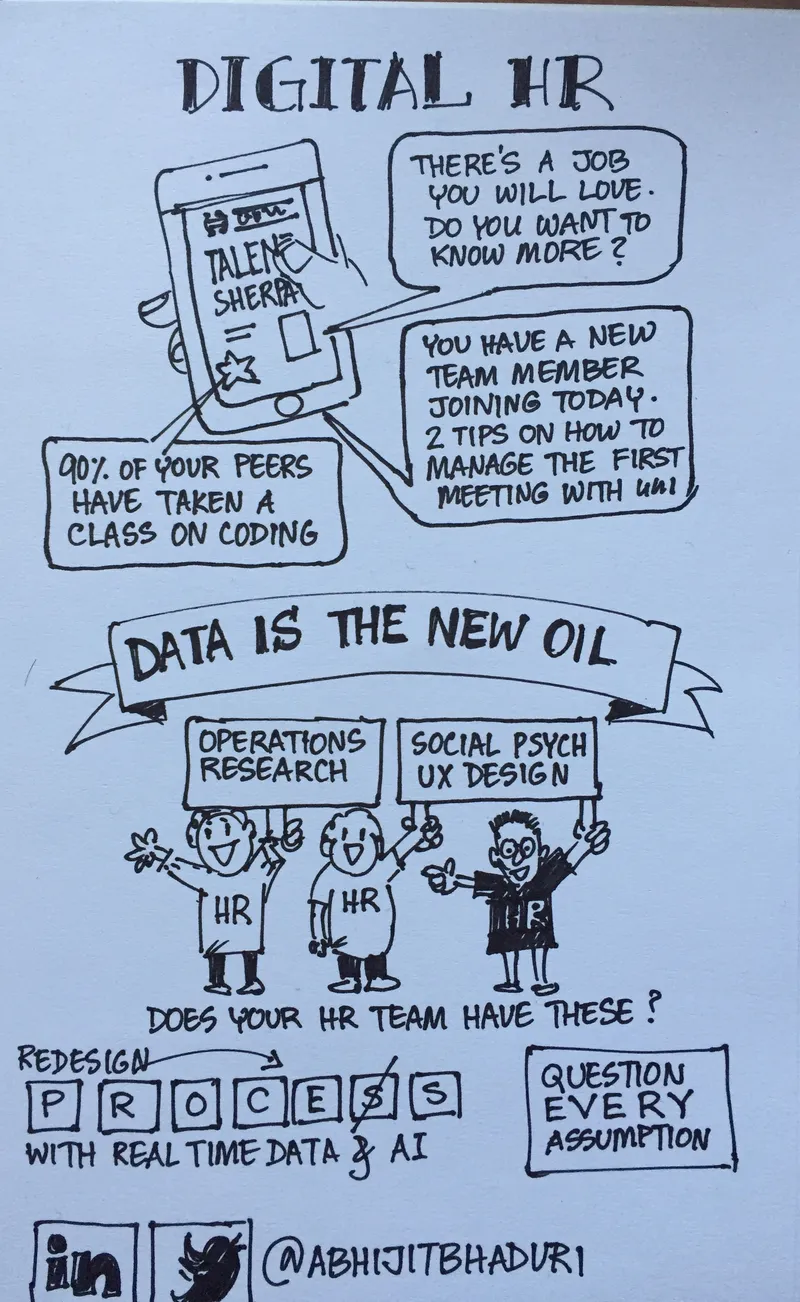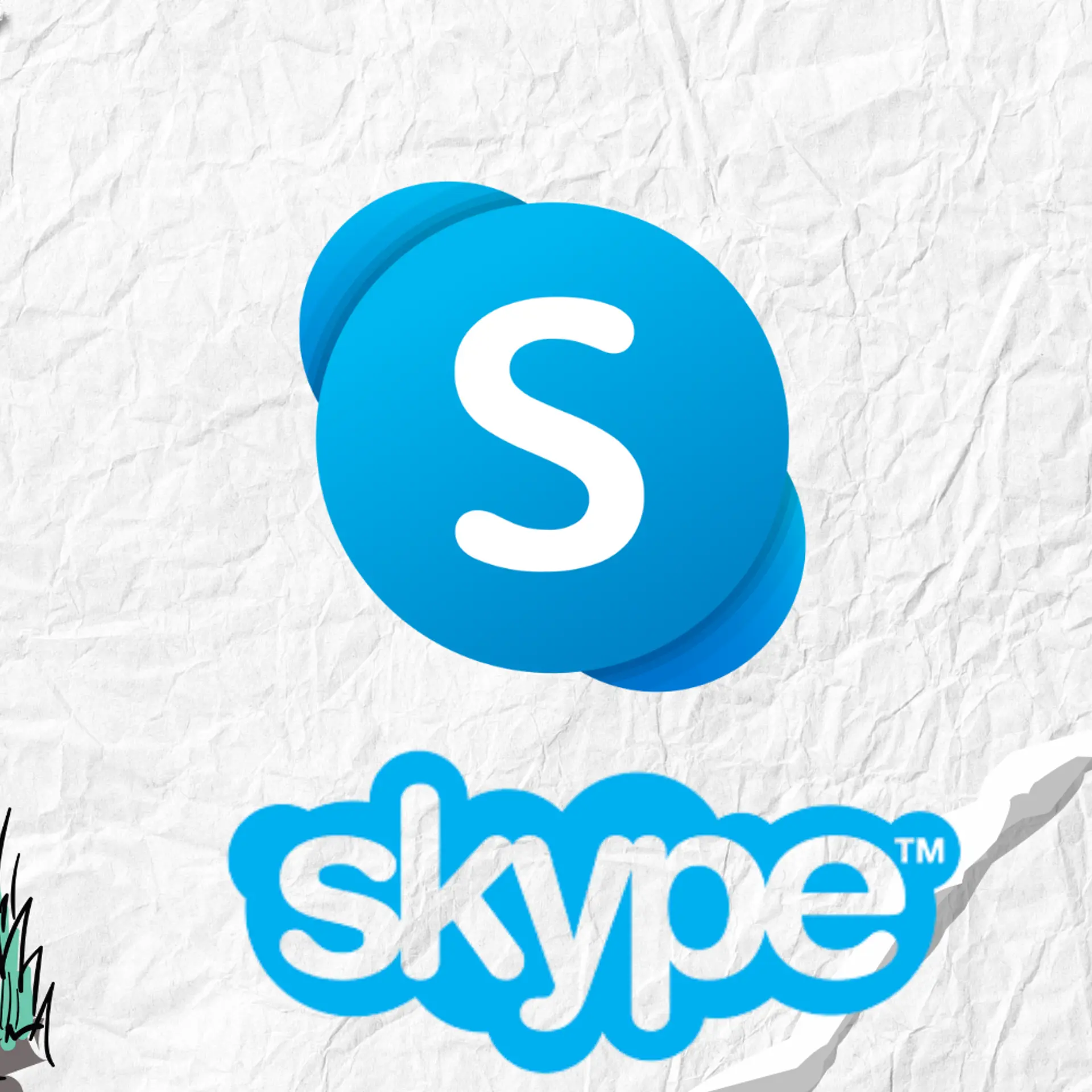Can digital HR solve hiring and learning problems?
What can HR learn from other functions like marketing who are trying to solve similar problems. But first, a visual summary of the key ideas.

There are thousands of beauty products in the market. Every consumer’s skin type is unique. It is hard to know which product will work best for your skin type. Olay uses a smartphone app that is powered by Artificial Intelligence (AI) technology to simplify this process for the consumer. The consumer snaps a selfie and creates a profile by answering some questions. Using the new platform, the system can give you the “age” of your skin and identify problem areas. Once identified, it will give you suggestions on how to best care for these specific areas of your face, including a full face routine. And as the AI comes into contact with more faces and skin types, the faster it will learn and become better at identifying issues.

Three factors are driving the rise of AI in every business. The first is the increase in the amount of data being generated all around. The social media posts, GPS in phones, photos and videos that we share, the credit card trail we use to buy stuff from e-commerce sites, all generate 2.5 quintillion bytes of data every day. Ninety percent of the data in the world today has been created in the last two years alone. That was in 2015. The pace has only increased since.
Low cost computing power because of all the connected devices and the cloud makes it inexpensive to do complex calculations. Machine learning techniques now allow us to analyse and verify millions of hypotheses in a day.
Can Digital HR solve hiring and learning problems
Now look at a similar problem organisations face. There are thousands of employers in the market. Every employer’s culture is unique. Every qualified candidate has a unique personality. It is hard to know which candidate will be the best fit for which employer. Imagine a smartphone app powered by AI that could simplify this process. The candidate just has to snap a selfie. Using the publicly searchable data about the person, the AI platform finds the critical elements of the role and company culture where such a candidate will thrive. On the day the vacancy gets created the employer and the candidate get notified and a meeting is set up to explore this possibility.
Finding gaps in the readiness of a candidate for the next role can be done by using AI. Imagine using an AI platform to let the system analyse your readiness for the role you wish to take, then provide a recommendation of the way to build the gap. There are already AI driven coaching tools that can be used to change the talent management process in organisations. Artificial Intelligence lies at the intersection of big data, machine learning and robotics. HR can leverage AI to truly impact business outcomes.
Data plus behavioral science
Employees are part of various social networks. They post their resumes on LinkedIn, videos on YouTube, photos on Instagram, write blogs on blogging platforms and comments on subjects they care about. The mobile phone is constantly generating data about our location, time and more. All this data can be used to learn about each person. By knowing about the individual and their context (e.g. why are they doing this transaction, how long did they take to do it, does the user take the data from this site to another?). If the data points that you capture about employees is limited to the form they filled while joining plus their performance data, then rethink how you can get real-time data.
When the user’s profile data is matched with the context, it is possible to make recommendations that are meaningful. That is how Amazon knows what you are likely to buy next. Imagine using Amazon-like recommendations for courses that each employee can take. By matching data from the manager’s calendar and emails from the hiring team, the AI platform can learn that a new hire is expected to join the team the next week. The machine can now recommend training videos that can help the manager make the first meeting a rich experience for the new hire.
The use of “social normative messages” (e.g. “9 out of 10 people in your team have learned how to xxx”) can be powerful ways of nudging people to stay current and encourage self-learning and build a culture where learning is celebrated.
Building trust
HR professionals need to build new skills to stay relevant in the new world. That means understanding ethics of data mining, usage and privacy. People share their deepest secrets with strangers on social sites. When it comes to trusting the employer, they use a need-to-know approach. The employees will share the bare minimum information that is necessary to get the job done. HR professionals have to educate the users about what information is being collected and how the data will be used.
Employers already have some data that is collected at the time of joining. Besides demographic data, this could mean data about employment and educational history, hobbies etc. Most employers add the annual performance rating to the employee record and end it at that. This is how HR has been run in the analog world.
Test assumptions
Being able to change people practices based on data should be the basis of all HR. Most organisations divide colleges into categories like Tier 1, Tier 2 etc and differentiate on the basis of that. It may be worth checking with evidence if people hired from the Tier 1 colleges indeed contribute substantially more than those from Tier 2 colleges? Is there a better way to identify top talent?
Josh Bersin shares an insightful example of Talent Analytics. When an employer asked the question, “what is common to all successful sales professionals?” they were in for a surprise. The pedigree of the college, the grades earned or even strong references were not relevant in predicting success. The most successful sales professionals had no typos on their resume (tells you about attention to details), had a track record of success (a proxy to check for grit), succeeding with vague instruction (can the person deal with ambiguity), planning their time and managing a lot of tasks etc. Studying your top talent can be a source of great insight (and revenue). The company in question saved $4mn by using Talent Analytics.
What makes people stay or leave, who is likely to be most successful, what percentage of the team’s success is dependent on the leader?
How to take the first steps
Here are a few steps that can get you started.
- The first requirement is a belief that every HR practice is up for rethink and renewal.Stop thinking of HR processes and think instead of business problems that you need to solve.
- Look at capturing real-time data.Hint: think of the mobile as the goldmine of data
- Build a team of cross-disciplinary experts in HR.Three must have skills in the HR team: Operations Research, UX design, Social Psychology.
- Challenge the assumptions underlying the process.
- For example, how do we prove that the current appraisal system is identifying top performer? Or better still, how much more does a top performer contribute to the bottom line of the company?
- Experiment continuously.Once you have five or six pieces of evidence, gather support from the business leaders about investing in an AI based platform for Talent Analytics.
This is not about haves and have-nots. There are those who are taking baby steps and those who believe, all this is a fad that will pass away. It is about haves and will-nots. Where does your organisation lie?
(Disclaimer: The views and opinions expressed in this article are those of the author and do not necessarily reflect the views of YourStory.)







